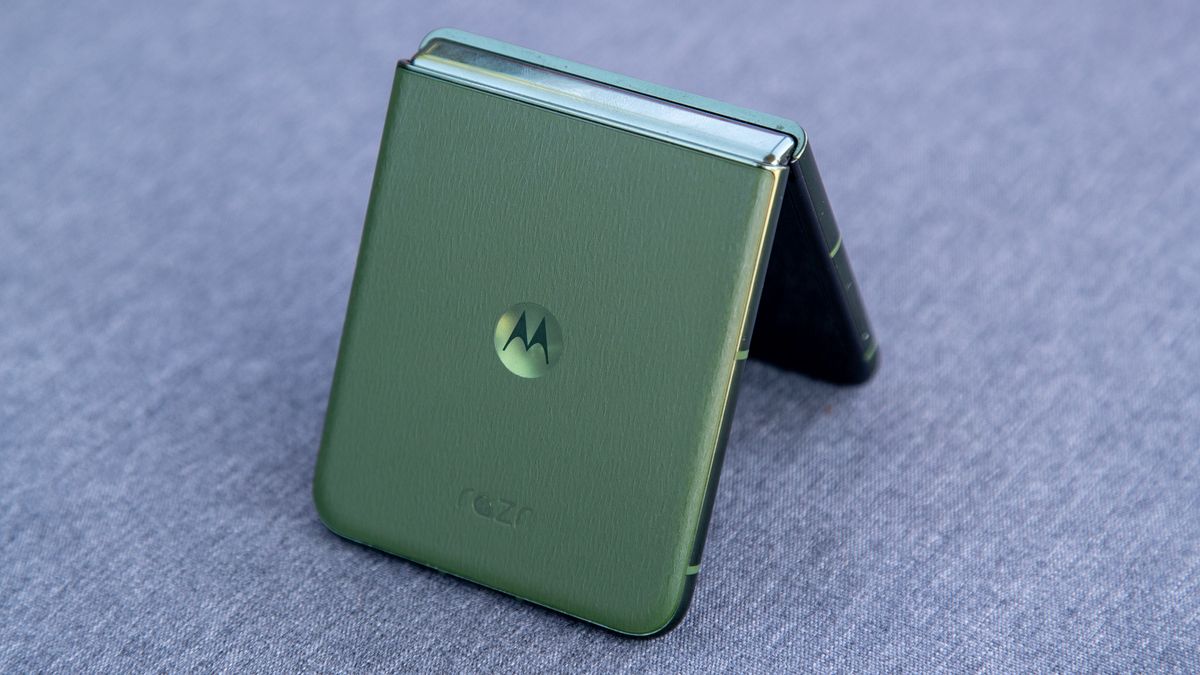In Disney and Pixar’s “Inside Out 2,” Joy, Sadness, Anger, Fear and Disgust meet new emotions.
Disney | Pixar
Disney is looking to bring a little joy to theaters with its upcoming release of Pixar’s “Inside Out 2.”
Current expectations see the animated sequel easily topping $85 million during its domestic opening this weekend, which would make it the highest debut of any film released in the United States and Canada in 2024. Some are even forecasting the film could secure more than $100 million in ticket sales, a feat not seen since July 2023 when Warner Bros.’ “Barbie” waltzed into cinemas.
Already “Inside Out 2” has tallied $13 million from Thursday night preview showings in North America. For comparison, 2019’s “Toy Story 4” generated $12 million on its Thursday previews and snared $120.9 million for its opening weekend.
Any opening figure north of $50 million would be a boon for Pixar, which has struggled to regain its foothold at the box office in the wake of the pandemic. However, Disney seems confident in “Inside Out 2,” as the film is expected to have a 100-day theatrical run, a nearly unheard-of stint nowadays for animated features and non-blockbuster action flicks.
While most consumers are agnostic about theatrical release windows — the period of weeks or months that a film is shown exclusively in theaters before it hits streaming or other on-demand options — for cinema operators and box office analysts, a commitment to more than three months of exclusivity on the big screen is a big deal.
Before the pandemic, industry standard was what’s known as the 90-day theatrical window (though the average was actually closer to about 75 days in reality, according to market research firm The Numbers).
Only a rare few films would extend beyond that date — usually massive franchise films or blockbuster hits. After that time frame, a film could move into the home video space, which included digital downloads, DVD and Blu-Ray discs and availability on streaming sites. Films would still play in theaters after that date, but would then compete with home-market sales.
When the pandemic hit, and theaters were forced to close, studios had to decide if they were going to hold off on releasing their films until cinemas reopened or place them on streaming or video-on-demand during the interim.
Disney was one of the companies that opted to make a number of its animated offerings available in the at-home market during that time.
As theaters began to reopen, studios renegotiated the amount of time that films were required to remain on the big screen before they could go to the home market. After all, new Covid variants and a not-yet widely available vaccine had led many moviegoers to stay home. The result has been a widely variable time frame of exclusivity, as each studio negotiated its own deal with the major cinema chains.
For example, Universal and Focus Features inked a deal in which movies had to play in cinemas for at least three weekends, or 17 days, before those films could transition to the premium video on-demand platforms.
“Ninety-day windows were always going to be unsustainable,” said Jeff Kaufman, senior vice president of film and marketing at Malco Theaters. “The pandemic sort of accelerated that.”
The shifting theatrical windows has left studios and cinemas with a complex equation.
A shorter window
Studios had been pushing to slim down the window prior to the pandemic in order to cut down on marketing expenses, explained Daniel Loria, senior vice president of content strategy and editorial director at the Box Office Company.
Studios were paying a significant amount to market films for their theatrical release and then months later had to drum up buzz again for a film’s transition to the home market. With shorter windows, studios don’t need to spend as much to refamiliarize audiences with a film as it’s likely still fresh in their minds from its debut.
“My impression of films going to [premium video on-demand] early is usually a decision to not double dip on the marketing spend,” Loria said.
Last year, the average run of a widely released film was 39 days, according to The Numbers. So far in 2024, the average run is 29 days. Of course, as bigger blockbuster titles roll out in the summer months, that figure is expected to grow.
Average theatrical window by major Hollywood studio in 2023
- Focus Features — 28 days
- Lionsgate — 30 days
- Universal — 30.8 days
- Warner Bros. — 30.9 days
- Paramount — 42.5 days
- Sony — 47.75 days
- 20th Century Fox — 60 days
- Searchlight — 60 days
- Disney — 62 days
Source: The Numbers
There are cases where studios have extended their runs well beyond the typical theatrical window. In 2022, for example, Paramount and Skydance’s “Top Gun: Maverick” played for more than 200 days in cinemas before heading to the home market.
And, these figures only refer to when a film becomes available in the home market for rent. Typically, the wait before films are available as part of subscription streaming services, often considered “free” by those subscribers, is much longer.
The Numbers reported the average time span between theatrical release and streaming subscription launch was 108 days in 2023.
Early on there were experiments with day-and-date releases, meaning films would hit cinemas and streaming at the same time. But that faded as studios realized these simultaneous releases cannibalized sales and led to increased piracy rates.
There’s also the consideration that many actors and directors have contract stipulations that award them a percentage of theatrical gains. In 2021, actress Scarlet Johannson sued Disney for releasing the 2020 Marvel film “Black Widow” on streaming and in theaters at the same time. She claimed that her agreement with the company guaranteed an exclusive theatrical release for her solo film, and her salary was based, in large part, on the box office performance. Johannson and Disney later settled for an undisclosed monetary sum.
Still, Universal has dabbled with the day-and-date model for horror movie fare around Halloween, opting most recently to release “Five Nights at Freddy’s” in theaters and on streamer Peacock at the same time. While the film had a stellar opening weekend, topping $80 million at the domestic box office, ticket sales shrunk more than 76% in the second weekend, reaching just $19 million.
Of course, shorter exclusivity and lower ticket sales can be bad for theater chains, which are still struggling to rebound operations after Covid. But some argue that getting the window wrong can be bad for the movie, too.
“A sufficient window is important not only to exhibitors, but also to our studio partners, as it’s necessary to deliver the full promotional and financial benefits of a film’s theatrical release, which continue to meaningfully enhance a film’s lifetime value across all distribution channels, including streaming,” said Sean Gamble, president and CEO of Cinemark.
Disney’s dilemma
It’s a lesson that Disney learned in the wake of the pandemic.
Both Walt Disney Animation and Pixar struggled to regain a foothold at the box office after pandemic restrictions lessened and audiences returned to theaters. Much of this was due to the fact that Disney opted to debut a handful of animated features directly on streaming service Disney+ during theatrical closures and even once cinemas had reopened.
The company sought to pad the company’s fledgling streaming service with content, stretching its creative teams thin and sending theatrical movies straight to digital.
That dynamic trained parents to seek out new Disney titles on streaming, not in theaters, even when Disney opted to return its films to the big screen.
As a result of that and other challenges, no Disney animated feature from Pixar or Walt Disney Animation has generated more than $480 million at the global box office since 2019. For comparison, just before the pandemic, “Coco” generated $796 million globally, while “Incredibles 2″ tallied $1.24 billion globally, and “Toy Story 4” snared $1.07 billion globally.
Box office experts are looking to “Inside Out 2” as a barometer for the health of Pixar and its future. If the film can capture attention from audiences and perform well over its opening weekend and beyond, the animation studios will regain goodwill from audiences and the industry.
Recent Pixar domestic opening weekend results
- “Elemental” (2023) — $29.6 million
- “Lightyear” (2022) — $50.5 million
- “Turning Red” (2022) — streaming release
- “Luca” (2021) — streaming release
- “Soul” (2020) — streaming release
- “Onward” (2020)* — $39.1 million
- “Toy Story 4” (2019) — $120.9 million
- “The Incredibles 2” (2018) — $182.6 million
* “Onward” was released just as Covid cases spiked in the U.S. and theaters began closing.
Source: The Numbers
A 100-day window for “Inside Out 2” may be the key.
Disney is one of the only studios that doesn’t have a traditional premium video on-demand window, according to Sebastian Gomez, a research and data analyst at The Numbers. Meaning, that once that theatrical window is up it will go to Disney+ where subscribers can watch it for free, rather than an intermediate rental option.
By delaying its at-home release, Disney is signaling to audiences that its latest Pixar release is a “must see” on the big screen.
The first “Inside Out” film, which hit theaters in 2015, generated $90.4 million during its opening weekend and tallied more than $850 million at the global box office.
Disclosure: Comcast is the parent company of NBCUniversal and CNBC.





















Discussion about this post